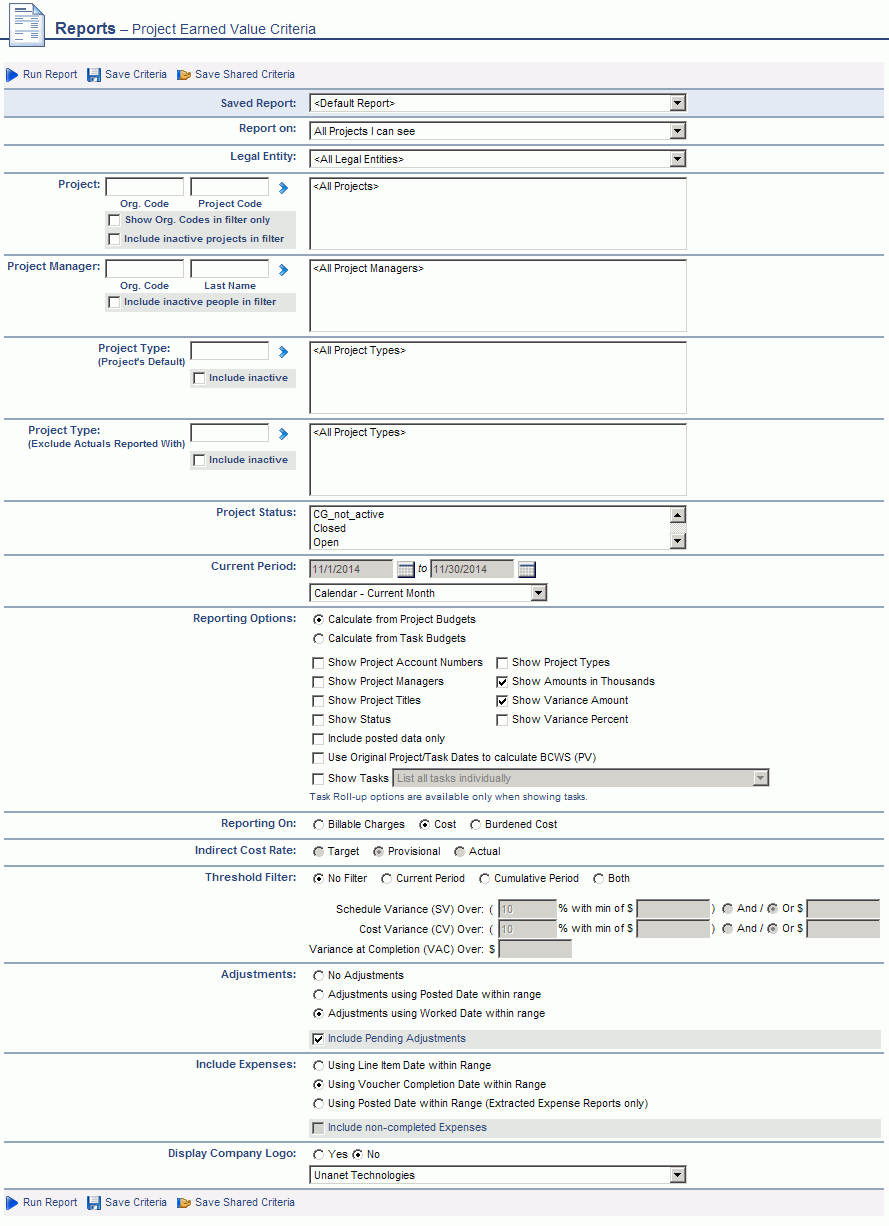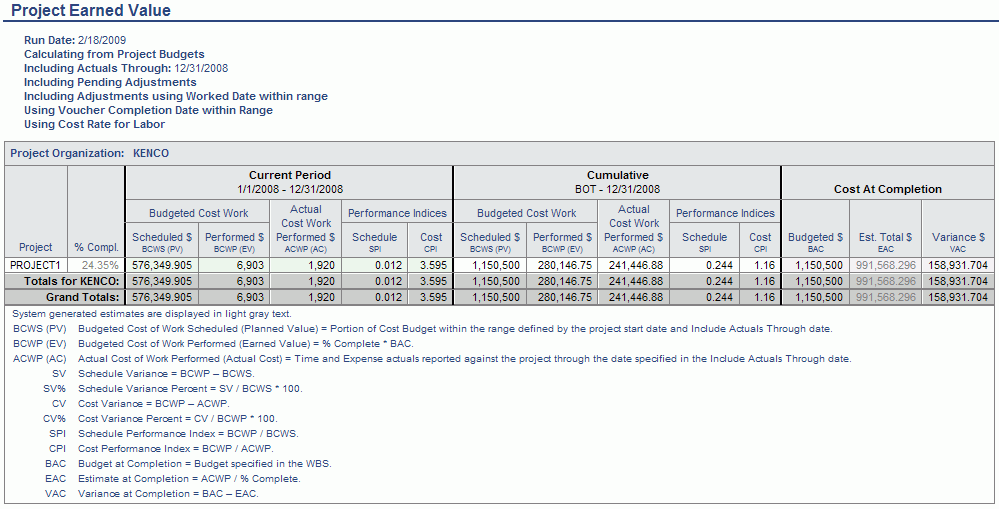|
|
|
|
Earned Value Management is a methodology used to measure and communicate the progress of a project taking into account the work complete, the time taken and the costs incurred to complete that work.
Earned Value measures project progress in monetary terms. It compares the planned with the actual so that an assessment of the project progress can be made. This report displays project information in a format similar to that specified in the Cost / Schedule Status Report (C/SSR) and Contract Performance Report (CPR) guidelines.
This report is available to users having any of the following roles:
Project Administrator (that also has the Bill Rate Manager role)
Project Administrator (that also has the Cost Rate Manager role or the Allow Project Cost Reporting for Non-Cost Rate Managers (unanet.non_cost_mgr.allow_project_cost_reporting) property is enabled)
This report is available with the Project Tracking and Project Portfolio family of licenses.
Topics covered on this help page include:
Selection Criteria (options available to tailor report output)
You may also be interested in:
Budget Snapshots (historical budget information used in this report is captured / maintained on the Budget Snapshot screens)

|
|
|

Typically, Earned Value management refers to the costs associated with a work item. Thus, one may not expect to find reporting on billable data when working with Earned Value. However, it may be the case that you would want to use the output of this report as supporting documentation for a client. As such, this report includes a "Rate" option which allows the user the ability to generate output using the bill option. In this way, what you bill your end customer may be considered their cost and thus the desire for this option. The rate option will only be available to users running this report that have both the Bill Rate Manager and Cost Rate Manager roles. Users having only one of these roles will not see the option and the option will automatically default to align with their permissions related to the rate manager role they have.
Earned Value Management is a methodology used to measure and communicate the progress of a project taking into account the work complete, the time taken and the costs incurred to complete that work.
Earned Value measures project progress in monetary terms. It compares the planned with the actual so that an assessment of the project progress can be made.
The value of planned work in Earned Value is represented by the Budgeted Cost for Work Scheduled (BCWS) or the sum of budgets for all activities scheduled to be completed in a given date range. Unanet’s Earned Value report defines the date range by the project start date and the report run date. BCWS is calculated by first finding all participating budgets (project or tasks); then each participating budget is evenly distributed across the date range defined by each budget's date range; then the portion of the distributed budget that falls within the Earned Value date range is added into the BCWS.
The value of planned work actually accomplished to-date is represented by the Budgeted Cost of Work Performed (BCWP) or the sum of the budgets for completed work in the date range. This parameter is the actual Earned Value. This is calculated as (% Complete * Budget at Completion).
The actual costs incurred in accomplishing the work performed are represented by the Actual Cost of Work Performed (ACWP). Those are calculated as the sum of all expenses and labor incurred in the report’s date range.
The question ”By how much did the work we actually accomplished cost more or less than we planned?” is answered by the Cost Variance. It is calculated as (BCWP – ACWP).
The question ”By how much did the work we actually accomplished vary from the work we planned to accomplish?” is answered by the Schedule Variance. It is calculated as (BCWP – BCWS).
The Cost at Completion Variance represents the difference between the original project budget and the estimated budget.
This report will use the information available on the Budget Snapshots (when available), otherwise the current project/task budget information will be used. When using the Budget Snapshot information, the entry used will be the entry having the minimum date greater than the end date of each period of interest. On this report, that would correspond to the current period end date and day before the current period begin date.
Calculations for the Current Period essentially involve the running of the Cumulative Earned Value amount through the end of the date range minus a running of the Cumulative Earned Value amount through the day before the beginning of the Current Period date range. The difference of those amounts would represent the Current Period values.
See the Report Calculations page for more information about derived value calculations.
The Unanet system has the ability to capture the data necessary for an accurate Earned Value tracking and we can generate a variety of the cost management and analysis reports. Thus, we have the ability to facilitate a standard compliant process. However, it is the data configuration and management process that each customer must come up with that will make our analysis tools produce meaningful information in the context of your accounting practices and your contracts' requirements.
Below is a brief description of how Unanet may satisfy the Earned Value Management System requirements outlined in the standard: